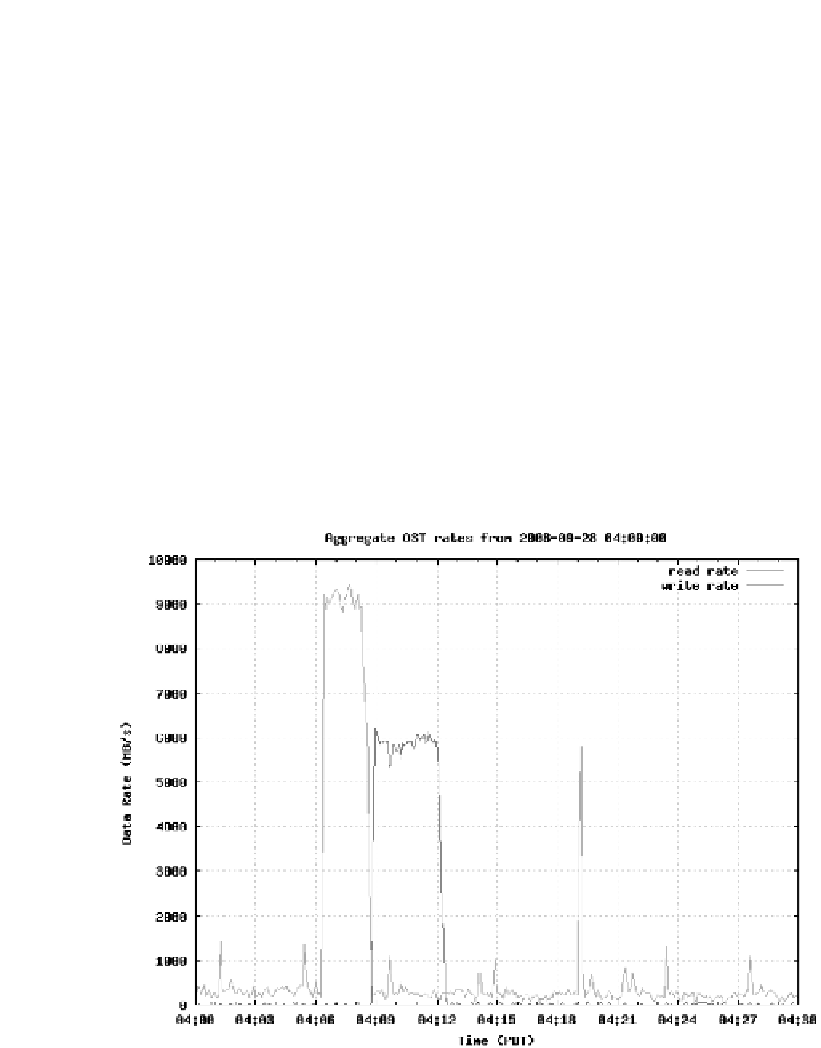Hardware Reference
In-Depth Information
performance of the file system. Figure 24.2 shows the activity on the Franklin
XT-4 file system when the IOR benchmark is run. In this example, the IOR
benchmark achieves a write rate of over 9 GB/s while the read test achieves a
rate of 6 GB/s. This benchmark was run on a production system and so the
smaller blue and red points indicate other I/O occurring on the system. File
system monitoring is measured by the Lustre Monitoring Tool (LMT) [21],
which measures server-side I/O activity.
Ideally, I/O benchmarks would be run on a dedicated system with no other
users or applications on the system. Running in isolation negates the effect
of contention from other applications and yields more predictable, repeatable
tests with lower variability. But running in a dedicated mode for a long period
of time can be impractical for HPC centers that have a responsibility to keep a
system available to its users. In this case, the benchmarker must perform tests
on a system running other applications, which could be affected by other users
on the system [21]. If possible, benchmark runs should avoid being scheduled
at the same time as other I/O-intensive jobs. This may be impossible, in
which case a benchmark should be run enough times to determine when the
benchmark performance is lowered as a result of contention.
FIGURE 24.2: Franklin XT-4 file system activity during an IOR run. The IOR
benchmark achieves a write rate of over 9 GB/s while the read test achieves
a rate of 6 GB/s.







